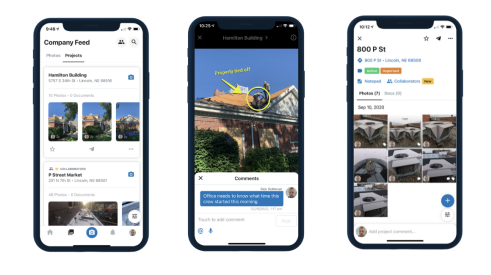Automated phone systems drive me crazy. If I hear one more recorded message asking me to “listen carefully because our menu options have changed,” my head will explode.
My most recent encounter came while trying to retrieve information about my mother’s retirement account from Prudential Financial. Why was I calling instead of using the Prudential website? Good question, because frankly, I’ve had some great experiences with online customer service.
For example, a few years ago, when I encountered an issue with the Rev-A-Shelf blind-corner hardware I was installing in my kitchen, I emailed the company’s customer service department with a description of the problem and a couple of photos. A day or two later I received a reply that included a custom video (the technician looked right at the camera and addressed me by my first name) that showed me the cause of the problem and how to solve it. Likewise, I’ve had great success with customer service via online chat, which is faster than email, and—unlike a phone call—leaves you with a written record.
But it’s not a mystery why I was calling Prudential. It’s because I couldn’t find what I wanted on the company’s website and decided that I needed to talk to a human being.
And these days, isn’t that need to talk to a real, live person precisely why most people use a phone to call a business? All the more maddening, then, that most callers encounter a voice-interactive automated menu whose primary purpose seems to be to postpone access to a live person for as long as is humanly—or I should say, robotically—possible.
Your Call Is Important to Us
These days, it’s safe to assume that most people will try to contact you online first. Like me, if they are calling it’s because they haven’t found what they need online. So here’s my No. 1 solution: Answer your phone. Next best: Hire someone to work in the office whose job, and whose particular skill, is to answer the phone. Give them other duties, but hire them with that skill in mind, and follow through with training.
High call volume may still be a problem. I don’t know about you, but I hate it when the first thing the person who answers my call says is, “Please hold.” (Some actually ask, “Can you hold please?” and it always works because I always say yes.) Most people will tolerate a brief hold, but make the experience bearable, if not pleasant. Do not fill the dead air with product pitches—waiting is bad enough, but now I can’t concentrate on other work because of your recorded marketing message. And please avoid telling me, repeatedly, how important my call is to you. My favorite hold experience? Silence, with a subtle beep every 10 or 15 seconds to confirm that I haven’t been disconnected.
Off Menu
If you absolutely have to resort to an automated system, it shouldn’t be too hard to stand out from the crowd. But just in case, here are recommendations gleaned from my hard-won experience on the client end of the line.
Keep it simple. Three to five menu items is plenty. Track current calls to determine why people are calling—those are your top menu items.
Stay on point. Get straight to the menu without providing extraneous information. People can get hours of operation, location, etc., from your website.
Real person first. One option is always access to a live human being, but if you want to really knock their socks off, make it the first option.
Call back on schedule. Studies show that a lot of people, especially millennials, abandon voicemail without leaving a message. That’s partly because no one ever calls back, so to repeat: Always call back. But what if your menu option also explained that “all voicemails will be answered by 9 p.m. of the same day” or something similar? If your voicemail message asks for a return phone number and email address, that gives you two ways to keep your promise.
How will you know if the phone system is working? If calls stop, it’s not. If they increase, use the menu’s analytics to find out why. Survey clients about their experience. Better yet, call your company and pretend you’re a remodeling customer.
And take notes.
Related Stories
Brian Gottlieb Receives Remodeling Mastery Award
Presented by industry icon, Mark Richardson, the award celebrated Gottlieb’s extraordinary impact on remodeling
What's Beyond the Hammer?
Working with Brian Gottlieb on the book Beyond the Hammer provided a masterclass on how to build an aligned team
Real AI Applications For Remodelers
Tech-forward remodeler Michael Anschel shares how he uses artificial intelligence in his business.
How to Eliminate Boring, Languishing Meetings
Leff Design Build ensures maximum productivity and efficiency through these straightforward methods
5 Counterintuitive Strategies to Improve Your Business
Follow these strategies to inspire employees, instill trust, and beat the competition
Couple Act As Much More Than General Contractors
How LBR Partners uplifts and educates their Spanish-speaking trade partners
How to Train for and Run Effective Design-Build Meetings
On this episode of Women at WIRC, Morgan Thomas of LEFF Design Build shares how to maximize your time by creating a culture around effective, collaborative meetings
Pro's Picks: A Real-Time Project Communication and Management Tool
This remodeler says this product allows for easy, quick, real-time communication with team members in the field and in the office
How to Create a World-Class Remodeling Team
Great remodeling companies position themselves for the future with the right players
Everyone Should Have a Number: KPIs for Your Design Build Team
Measuring key performance indicators guides your team to success while creating accountability and ownership












